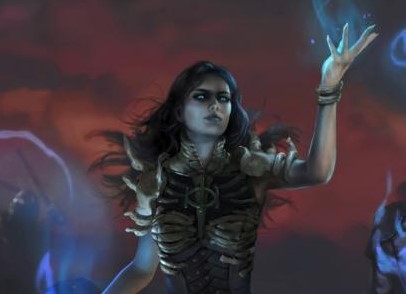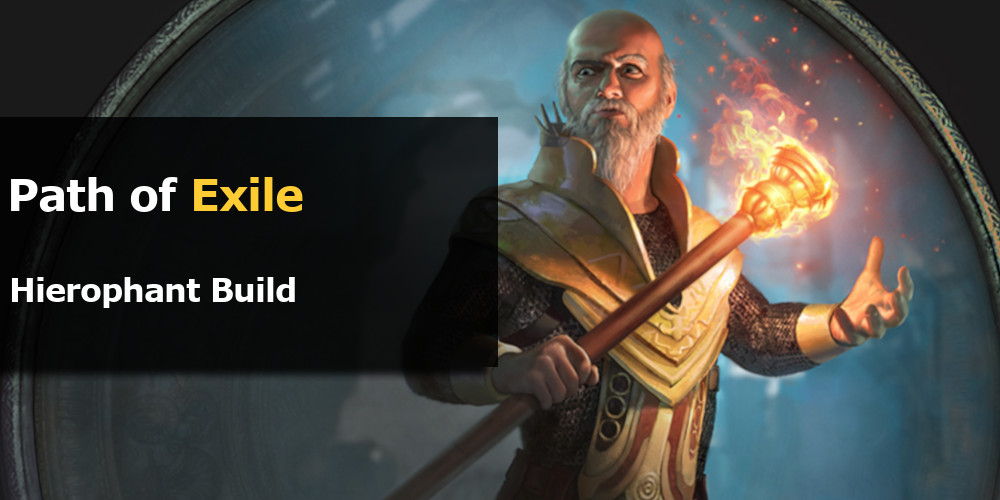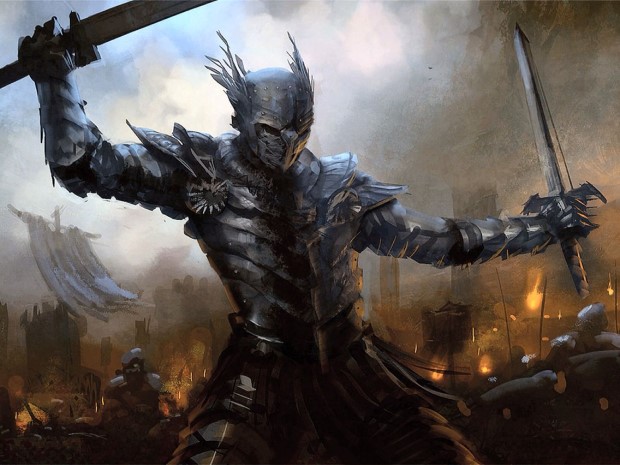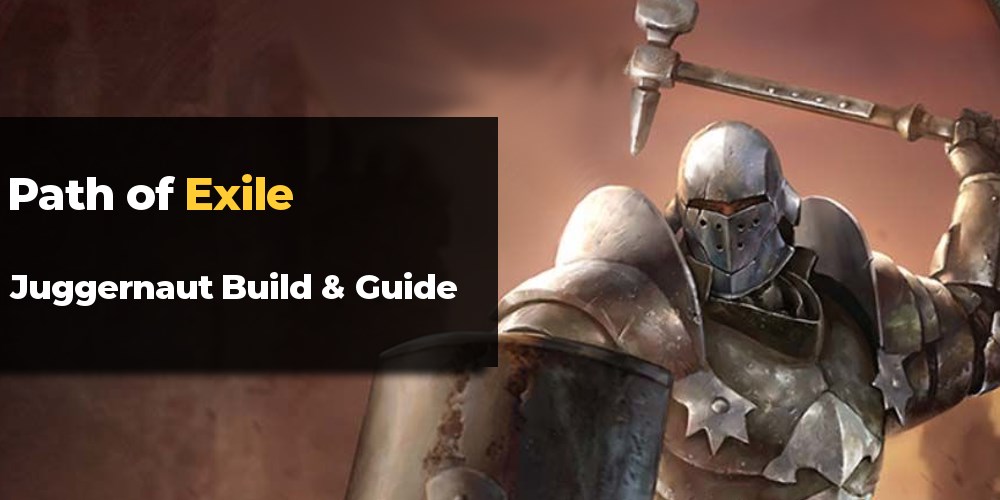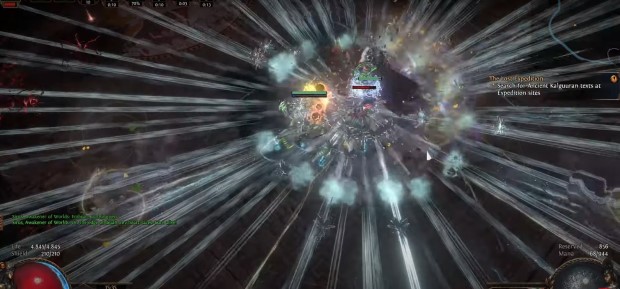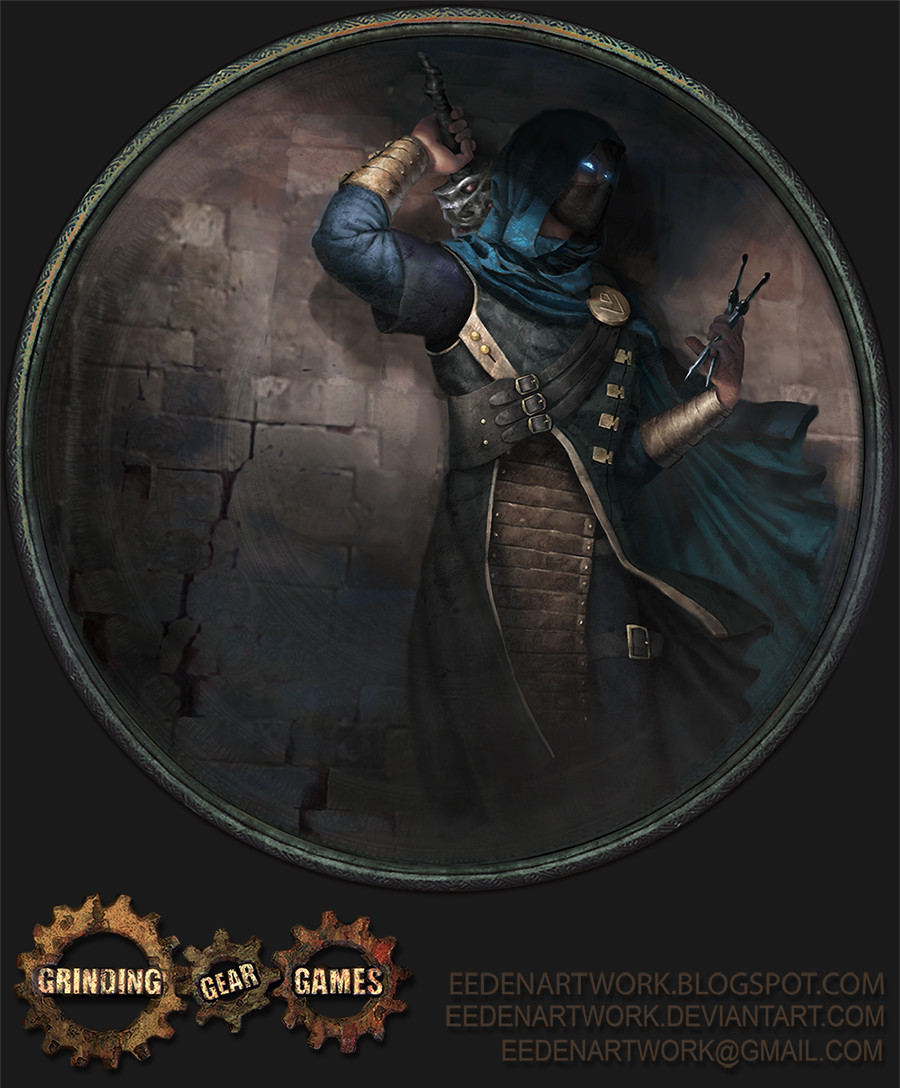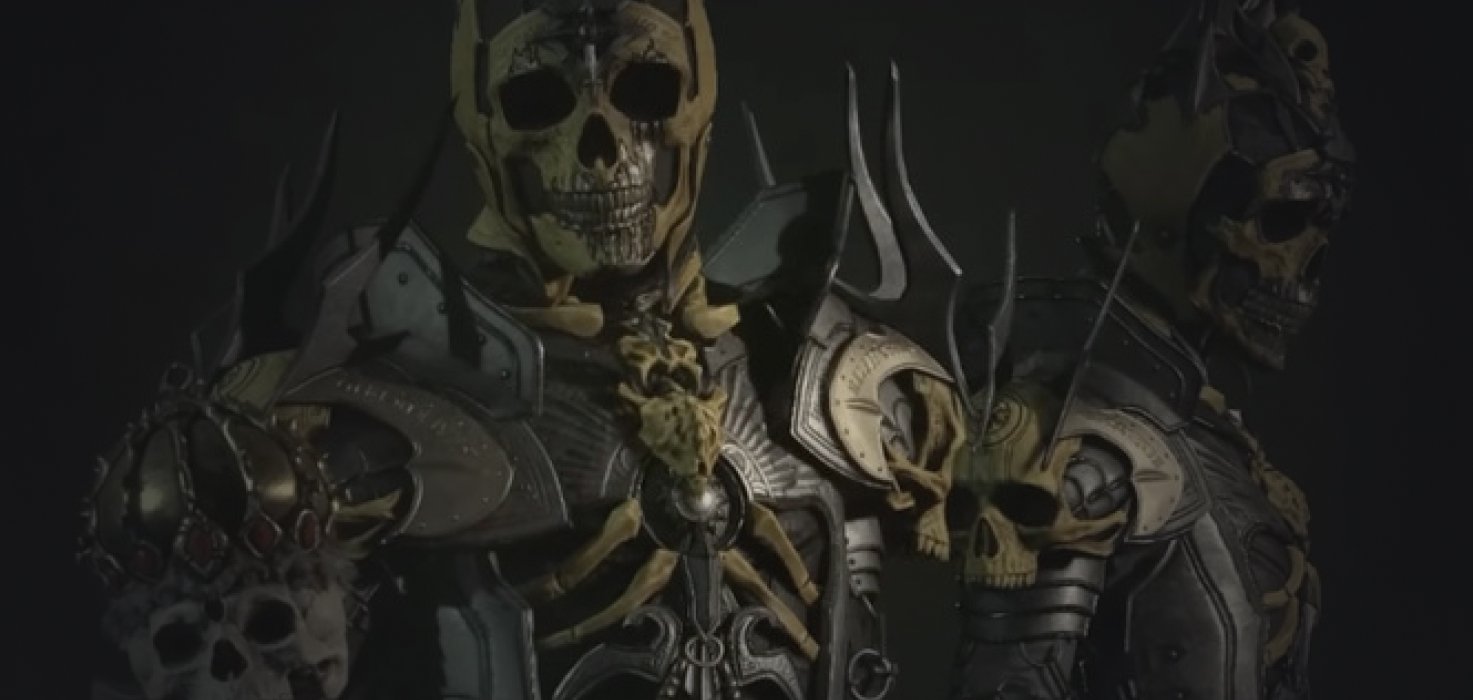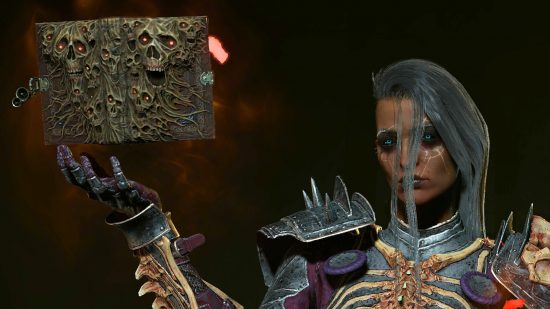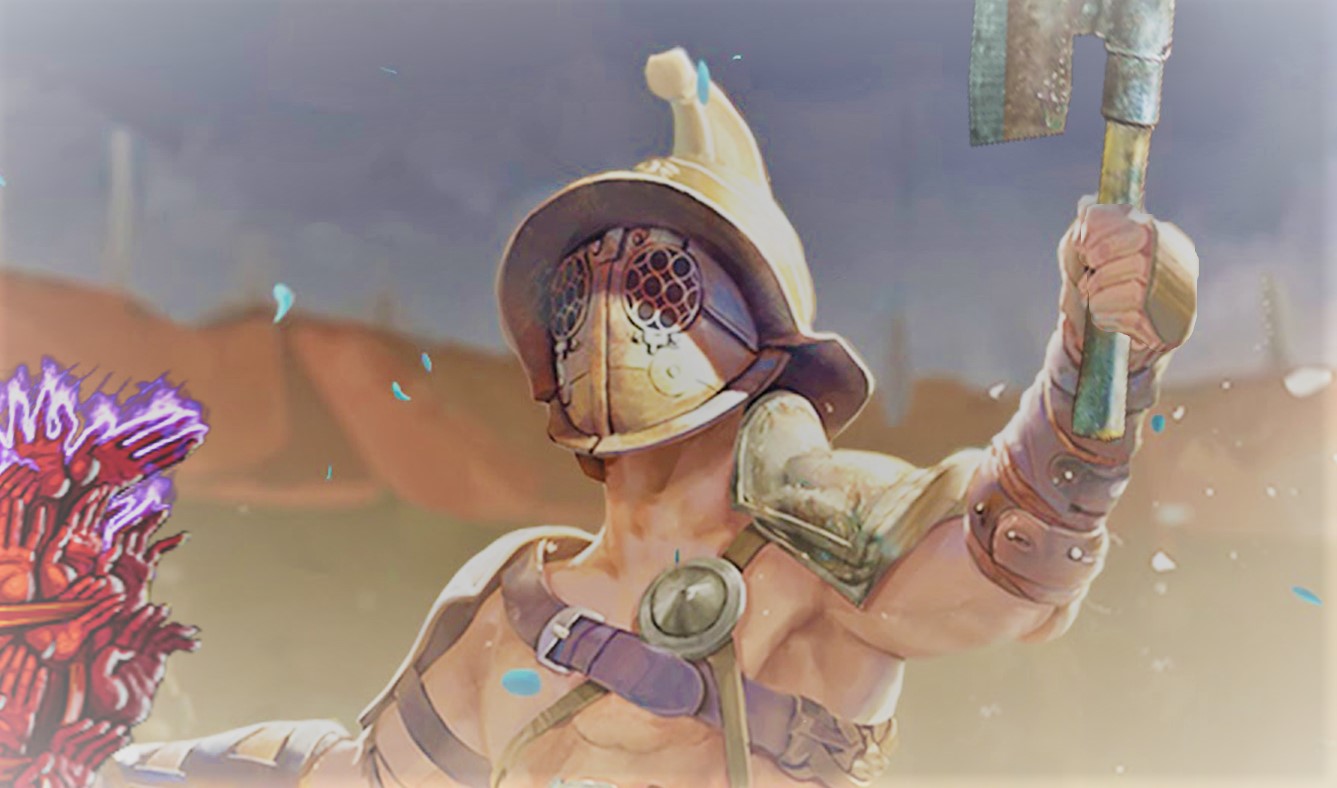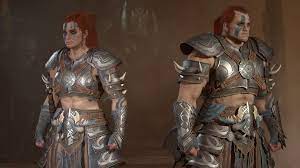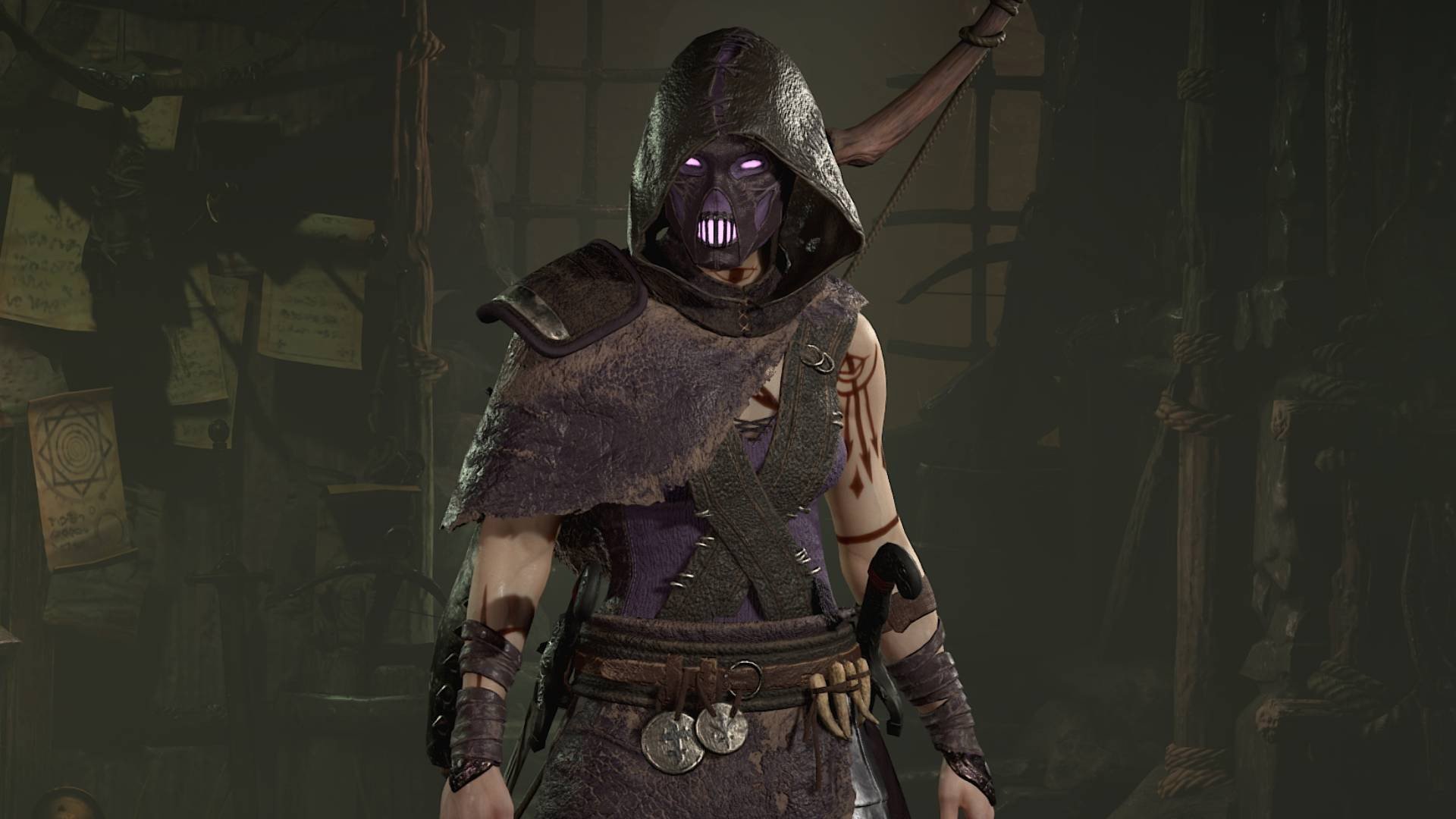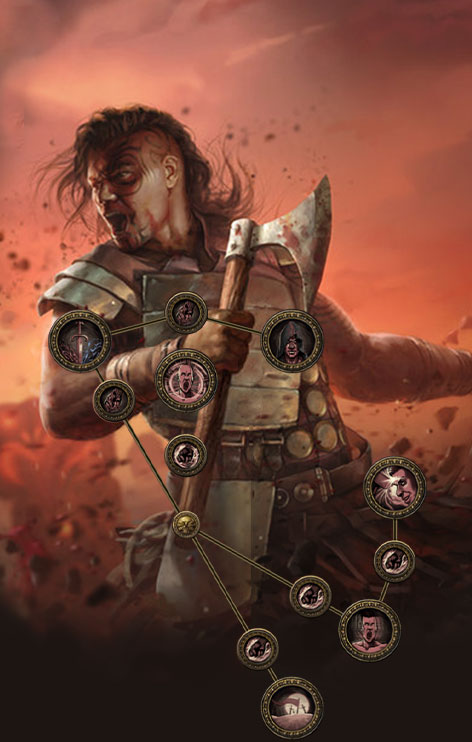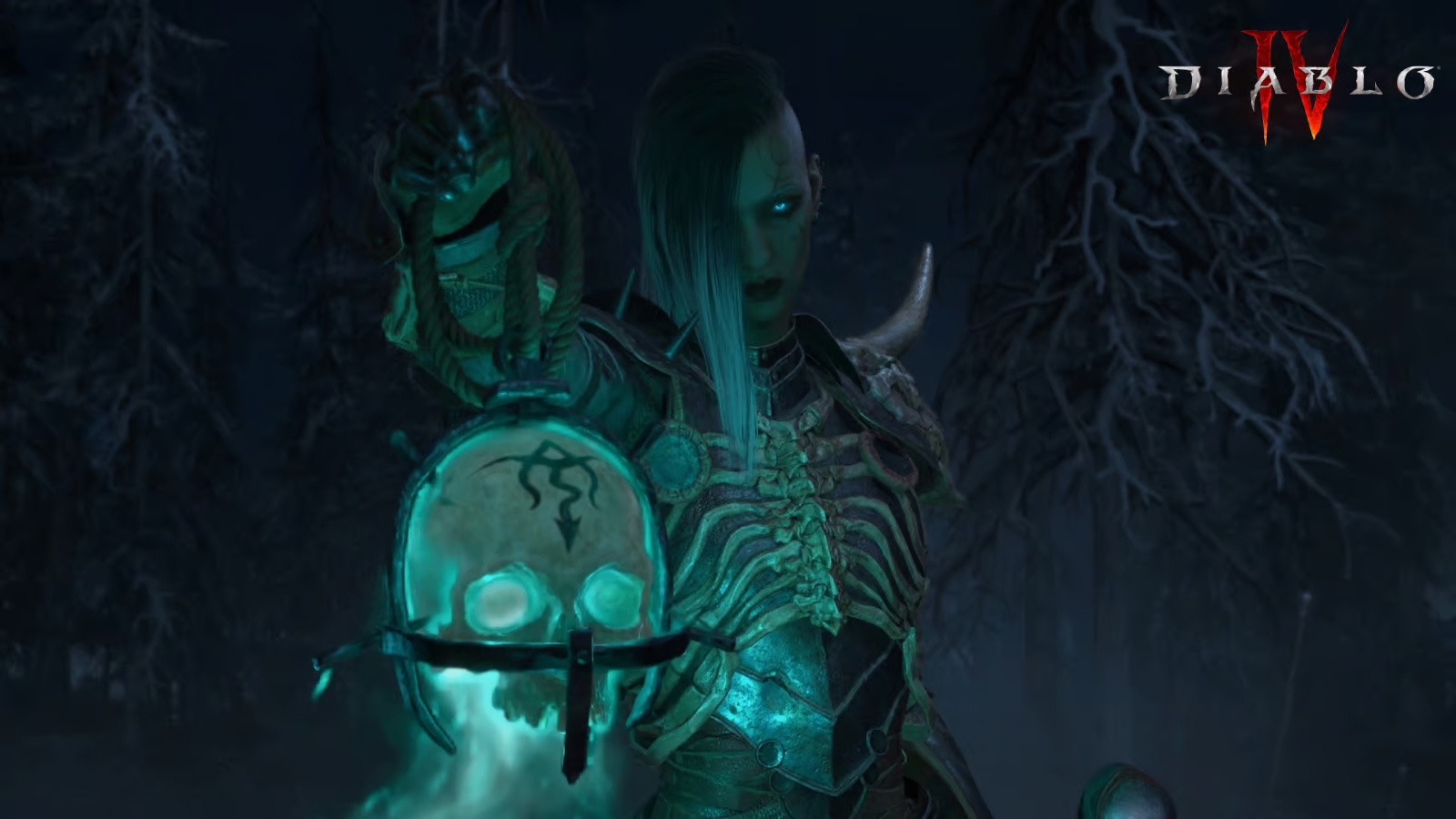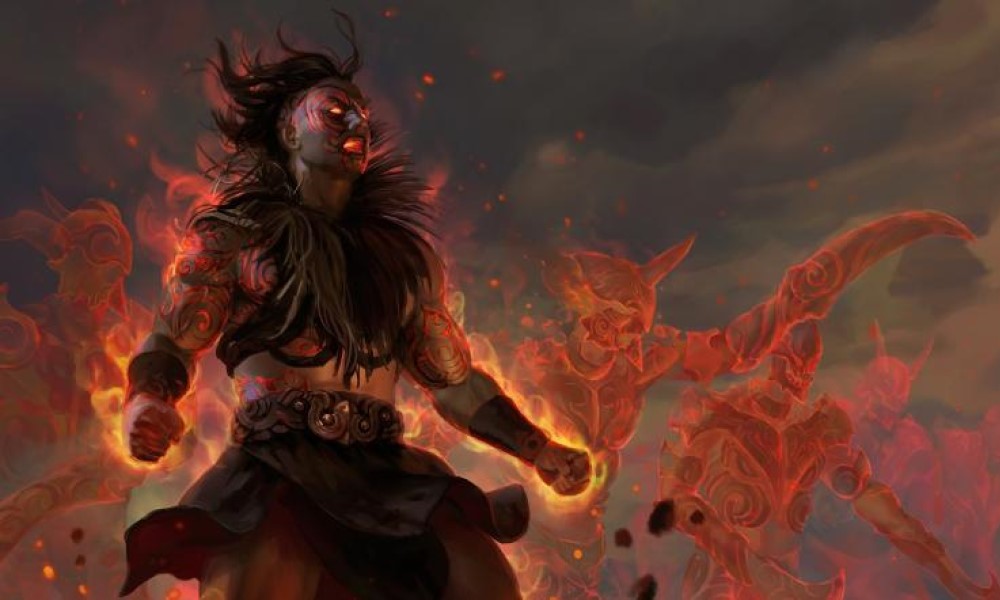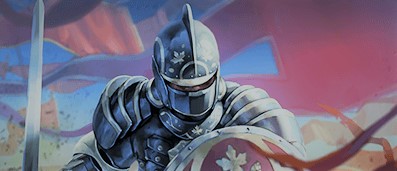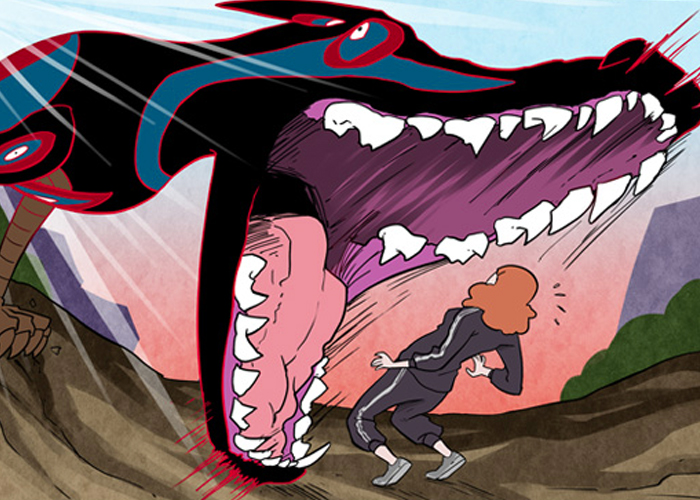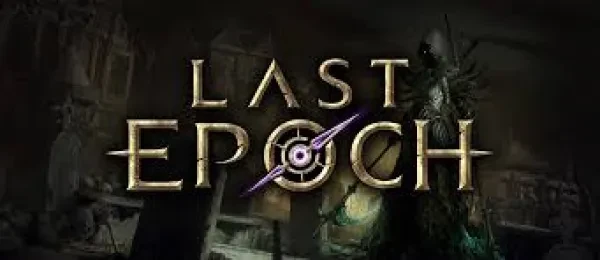
All three games are action RPGs set in dark, fantasy worlds. They share a focus on deep character customization, loot-driven gameplay, and a strong emphasis on both solo and cooperative dungeon crawling experiences. Each game offers a unique take on the genre, but they all cater to players who enjoy rich storytelling, strategic combat, and the thrill of discovering powerful gear. Whether you’re battling through the epochs, facing the horrors of Sanctuary, or surviving the dangers of Wraeclast, these games provide robust and engaging worlds for players to lose themselves in.
1. Last Epoch
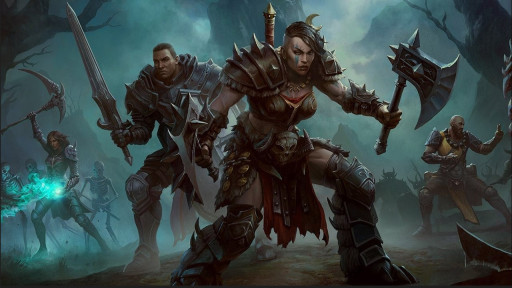
Last Epoch is an engaging action role-playing game (ARPG) that offers a unique blend of time travel, deep character customization, and dynamic gameplay. Set in the world of Eterra, players navigate through different eras, battling formidable foes and uncovering the mysteries of the past. The game features a class system with 15 mastery classes, each with its own set of skills and abilities, allowing for a wide range of playstyles and strategic builds.
The Story:
The lore of Last Epoch is deeply woven into the world of Eterra, starting with the void and the contrasting desires of Orobyss and Eterra for emptiness and creation, respectively. Eterra's creation of the world led to the Ancient Era, where she lived among dragons until her disappearance brought about their downfall. In the Divine Era, gods coexist with humans, but the threat of Rahyeh's war looms large.
Players enter this complex narrative amidst peace negotiations between tribes and temple guardians, embarking on a quest across time to prevent the world from falling into darkness and the corrupting grip of the Void. Through their choices, players shape Eterra's fate and unravel the mysteries of its history, forging a path towards redemption or peril in a grand adventure of exploration and decision-making.
How Much Content is in the Game:
- Endgame Systems: After the main story, players can delve into the Monolith of Fate, a series of alternate timelines offering unique challenges and rewards. As you progress, you can increase your experience and Corruption level for higher difficulty and better loot1.
- Dungeons: There are several dungeons like the Temporal Sanctum, where you can craft legendary items, and the Soulfire Bastion, which presents unique environmental challenges. Another is the Lightless Arbor, which involves keeping a flame alight while exploring.
- Item Crafting: A deep crafting system allows you to create powerful gear. You can combine Exalted and Unique items of the same type to craft Legendary items, enhancing your character’s abilities.
- Cycle Schedule: The 2024 roadmap includes new content cycles, promising fresh endgame activities, items, and more to keep the game engaging.
How The Class System Works:
The class system begins with the selection of a base class during character creation. As you progress, you can specialize in master classes by taking the appropriate passive nodes. Here’s a brief overview:
Base Classes:
- Acolyte: A seeker of forbidden magic, aiming for power.
- Mage: An elder using arcane power to right past wrongs.
- Primalist: A warrior attuned to the power of the earth.
- Rogue: A master of stealth and combat.
- Sentinel: A stalwart defender against injustice.
Master Classes: Each base class has several master classes that offer specialized paths with unique skills and passives. For example:
- Acolyte can become a Lich, Necromancer, or Warlock.
- Mage can specialize as a Runemaster, Sorcerer, or Spellblade.
- Primalist has options like Beastmaster, Druid, or Shaman.
- Rogue can become Marksman, Falconers or Bladedancers.
- Sentinel can choose Forge Guard, Void Knight or Paladin.
How leveling works:
Levels 1-50:
- You start in the story mode, which is mandatory for your first character. This mode introduces you to the game mechanics and takes you through nine acts or chapters.
- Side quests are available, offering rewards like EXP, Gold, Idol Slots, and Passive Skill Points. It’s recommended to focus on quests that provide Idol Slots and Passive Skill Points as they increase your power.
- There are 15 Passive Points Rewards and 8 Idol Slot Rewards available from quests. However, you’re capped at 15 Passive Points from quests.
Post-Level 50:
After completing the story, you unlock endgame activities like Dungeons, Arenas, and the Monolith of Fate.
For subsequent characters, you have the option to level up using alternate methods, such as jumping directly to endgame activities after certain story milestones.
Skill and Mastery Levels:
- The maximum character level is 100.
- Skills can be levelled up individually, up to a maximum of level 20.
- Mastery Class levels are gained by spending points in their respective Passive trees.
How does the Build System work:
The build system in “Last Epoch” is quite robust, allowing for a high degree of customization for your character. Here’s a general overview:
- Base Class and Mastery: You start by choosing a base class and then specialize in one of the master classes, which further defines your playstyle and abilities.
- Passive Skill Tree: Each class has its own passive skill tree, which provides various buffs and abilities. As you level up, you gain points to spend in this tree, shaping your character’s strengths.
- Active Skills and Specializations: Active skills can be levelled up and specialized. Each skill has its own tree where you can unlock and enhance specific aspects of that skill.
- Gear and Affixes: Gear comes with affixes that can be customized through crafting. This allows you to tailor your equipment to support your chosen skills and playstyle.
- Idols and Blessings: Idols provide additional customization, offering unique effects that can complement your build. Blessings, obtained from completing endgame timelines, offer powerful buffs.
- Build Guides and Resources: There are numerous community resources, such as Maxroll.gg and the Last Epoch Build Planner, which provide detailed guides and tools to plan and optimize your builds.
For a more in-depth understanding, including specific build guides like the Echo Warpath Void Knight, you can explore these resources and the Last Epoch forums1. They offer a wealth of information on various builds, strategies, and updates to the game’s mechanics.
How is the itemization of Last Epoch:
Itemization in “Last Epoch” is a critical aspect of character development and gameplay. Here’s how it works:
- Item Types: Items come in various types, such as weapons, armour, jewellery, and more, each with specific slots on your character.
- Item Rarities: Items are categorized by rarity: Normal, Magic, Rare, Unique, Set, and Exalted. Each rarity level indicates the potential power and affix count of an item.
- Affixes: Affixes are properties that items have, which can be either prefixes or suffixes. They provide bonuses like increased damage, health, or resistance.
- Implicit and Explicit Modifiers: Implicit modifiers are inherent to the item type and cannot be changed. Explicit modifiers are the affixes that can be added or modified through crafting.
- Crafting: You can upgrade existing affixes, add new affixes, or use Glyphs and Runes to modify the item further.
- Upgrading Affixes: Affixes are divided into tiers, with tier 5 being the highest for most affixes. You can upgrade an affix by clicking the up arrow next to it if it’s below tier 5.
- Adding Affixes: To add an affix, press the plus sign in an empty affix slot or the large plus sign at the bottom centre of the Forge.
- Using Glyphs and Runes: Glyphs and Runes are special crafting materials that provide additional effects or influence the crafting outcome.
- Place a Glyph in the centre slot or a Rune in the hexagon slot to use them.
- Forging Potential: Forging Potential determines how much you can craft on an item. If it reaches 0, you can no longer craft on that item. Crafting actions consume Forging Potential, and the amount used depends on several factors, such as the tier of the affix or the type of Rune used.
- Critical Success and Glyph of Hope: A Critical Success or a proc from a Glyph of Hope can reduce the Forging Potential cost to zero.
- Forging Potential Variation: Items have varying amounts of Forging Potential based on factors like area level and rarity.
- Item Factions: A new system called Item Factions has been introduced, allowing players to join factions, gain ranks, and access special faction items.
- Trade and Item Gifting: Last Epoch has implemented an Item Gifting System, designed to allow sharing items with friends while maintaining the integrity of the item hunt.
Game modes in Last Epoch:
Online and Offline Play: Players can opt to play either online with others or offline by themselves. Characters created for offline play cannot be transferred to online play.
PvP or PvE: Players can decide whether to engage in Player vs. Environment (PvE) or Player vs. Player (PvP) gameplay through the locations they visit in the world of Eterra.
Character Modes: During character creation, players can enable specific modes such as:
- Hardcore Mode: For a more challenging experience where death is permanent.
- Solo Challenge: To play entirely solo without trading or multiplayer interactions.
- Cycle: To play with the newest changes and exclusive Cycle Mechanics (seasons).
- Eternal: Always play your characters, even the ones after a Cycle Ends.
Choose Last Epoch if you like:
- New-player Friendly ARPG.
- In-depth customization of character power.
- Rich passive tree and depth of skill customization.
- Intricate Crafting system, but easy to master.
2. Diablo IV

Diablo IV is an action role-playing game developed by Blizzard Entertainment. Set in a dark, open-world environment, players will explore and combat the forces of evil. The game features a non-linear narrative and introduces new character classes such as the Barbarian, Sorceress, Druid, and more. Emphasizing a darker and grittier experience, Diablo IV continues the legacy of the series, set years after the events of Diablo III, with central figures like Lilith, the daughter of Mephisto, and Inarius, the Father of Sanctuary, playing a significant role.
The Story:
In Diablo IV, set over 50 years after Diablo III's events, Lilith returns, aiming to control Sanctuary. As a player, you embody a hero like a Barbarian or Necromancer to thwart Lilith's plans across monster-filled landscapes. The narrative unfolds through a prologue, six acts, and an epilogue, delving into Sanctuary's origins, Nephalem's transition to humans, and the Horadrim's role in combating demonic forces. The story culminates in a climactic battle against Lilith in the Throne of Hatred, revealing her defeat but leaving hints of future threats.
Diablo IV's dark world and struggle against Lilith's ambitions drive the gameplay, emphasizing exploration, combat, and uncovering Sanctuary's secrets. As players navigate this perilous journey, they confront the legacy of the series, the eternal conflict between Heaven and Hell, and the unpredictable future hinted at by Lilith's downfall.
How much content is in Diablo IV:
Diablo IV is rich in content, offering a variety of activities for players to engage in:
- Campaign: A deep narrative experience with quests and cut-scenes.
- Dungeons: Procedurally generated instances with unique challenges and rewards.
- PvP Zones: Areas where players can choose to engage in player vs. player combat.
- World Bosses: Powerful enemies that require cooperation among multiple players to defeat.
- Crafting: An extensive system for creating and enhancing gear.
- Trading: A player-driven economy with options to trade items and gold with others.
- Mounts: Creatures that players can ride to traverse the world faster.
- Customization: Detailed character and gear customization options.
The game also promises regular updates post-launch, introducing new content, features, and events to keep the gameplay experience fresh and engaging. Whether interested in the story, competitive play, or exploration, Diablo IV caters to every type of player.
How does the Class System works:
In Diablo 4, the class system allows players to choose from multiple classes, each with unique abilities, strengths, and playstyles. Here’s a brief overview of the classes and how they work:
- Barbarian: Known for brute strength and melee combat skills. Barbarians generate Fury with basic skills to unleash powerful attacks.
- Rogue: Versatile fighters adept at both ranged and close combat. They can specialize in various weapons and techniques.
- Sorcerer: Masters of elemental magic. Sorcerers use spells to control the battlefield and deal damage from a distance.
- Druid: Shape-shifters who can transform into different beasts and command the forces of nature.
- Necromancer: Dark spellcasters who manipulate the dead, summoning minions and cursing their enemies.
Each class has a unique mechanic that adds depth to the gameplay and allows for further customization. Players can't change their class after selection but can build their character’s skills and abilities within their chosen class. The game is expected to add more classes in the future through DLCs or seasonal events.
How does Leveling work in Diablo IV:
Levelling up in Diablo 4 involves several key steps:
- Early Game (Levels 1-50): Gain experience points (XP) by completing quests, and dungeons, and defeating enemies. Each level-up grants skill points for your class’s skill tree.
- Post Level 50 - Paragon Board: After reaching level 50, earn Paragon points to fine-tune your abilities and customize your build further.
- Endgame Activities: Focus on grinding XP and gear to strengthen your character for more challenging content.
- World Tiers: The game features a World Tier system that adjusts difficulty dynamically. Climb tiers for tougher enemies and increased rewards as you progress.
- World Tier 1 (Adventurer): Designed for new players or those seeking a relaxed experience. Enemies are less aggressive, and campaign bosses are easier to defeat.
- World Tier 2 (Veteran): A step up in difficulty for experienced players. Enemies are tougher, and you’ll receive a 5% increase in XP and gold from monsters.
- World Tier 3 (Nightmare) and World Tier 4 (Torment): Unlocked after completing the campaign, these tiers offer greater challenges and rewards, with a 150% increase of XP in WT3 and 250% in WT4 (Season 4 onwards).
- Unique items can drop, and advanced events like Nightmare Dungeons and Helltides are available in Season 4 onwards in all World Tiers (except Ubers).
For a smooth levelling experience, choose your class wisely, play at higher World Tiers when ready, and engage in cooperative play. Utilize elixirs, dungeons, strongholds, and world events for efficient XP gains.
How the build system works:
The build system in Diablo 4 offers players deep customization for their characters:
- Skill Tree: Each class has a skill tree with various abilities. Gain skill points as you level up to unlock or enhance skills.
- Paragon Board: Unlocked after reaching max level, customize further using Paragon points on the board's tiles.
- Gear: Equip weapons, armour, and accessories with attributes and special effects that complement your skills.
- Legendary Aspects: Powerful modifications applied to gear, granting new abilities or enhancing existing ones.
- Gems and Runes: Socket into gear for additional bonuses and unique effects by combining different runes.
- Build Guides: Community-driven guides and tier lists help choose effective builds for different playstyles and the current meta.
Create a build tailored to your playstyle while maximizing effectiveness in solo, group, or PvP scenarios. For detailed guides and recommended builds, check resources like Icyveins and Maxroll.
In Diablo 4, itemization plays a crucial role in enhancing gameplay and character development.
- Gear and Itemization: Diablo 4 offers a flexible loot system, allowing players to obtain powerful items without specific farming requirements. Gear can be re-rollable or imprinted with Legendary Aspects, and upgrading gear improves its item level and core stats.
- Gear Rarity: Items come in various rarities, with drop chances increasing with the world tier. Common and Magic items drop frequently, while Rare and Legendary items are less common. Unique items are extremely rare, with fixed affixes and special powers.
Item Types:
- Normal items: Basic items with no affixes.
- Magic items: Have up to two affixes.
- Rare items: Contain up to four affixes and are powerful in the early game.
- Legendary items: The most powerful items, aside from Unique ones.
- Sacred Items: These items start dropping in World Tier 3: Nightmare. They are superior versions of common gear with better base stats and one additional affix compared to regular rare items.
- Ancestral Items: The most powerful gear tier, Ancestral items, begin dropping in World Tier 4: Torment. They feature even higher stats and item power than Sacred items.
Diablo 4 Season 4 Itemization Updates
In Diablo 4 Season 4, itemization has undergone significant changes to enhance the player experience.
- Quality Over Quantity: Focus on fewer but higher quality items, giving each item more significance and longevity for players.
- Item Journey: New systems make items part of a journey, allowing players to progress and craft unique and personal items.
- Trading Updates: Legendary and Unique items are tradable, except for crafted items (bound to the player) and Uber Uniques (non-tradable).
- Affix Updates: Items draw affixes from a smaller pool to reduce duplicates and conditional effects. Legendary items now roll with 3 affixes, down from 4, with increased affix potency.
- Tier-Specific Drops: Sacred items drop in World Tier 3, and Ancestral items in World Tier 4, with overall increased affix values.
These changes aim to improve itemization quality, player progression, and trading dynamics in Diablo 4 Season 4.
Diablo IV Game Modes:
Diablo IV offers a variety of game modes to cater to different playstyles:
- Hardcore Mode: A challenging mode where your character is permanently lost upon death, adding intensity and risk to the gameplay.
- PvP (Player vs. Player): Engage in combat with other players in dedicated zones like the Fields of Hatred, where you can collect and purify Seeds of Hatred for rewards.
- Seasonal Mode: Play and experiment with all the seasonal content that is created every few months.
- Eternal mode: Continue to play all your characters even after Seasons end and new ones begin.
Choose Diablo 4 if you Like:
- Open World games.
- Immersive and fantastic world-building, lore, and storytelling.
- Casual gameplay with rewarding gameplay.
- Couch Coop games with gore-y themes.
3. Path of Exile

Path of Exile (PoE) is a free online-only action RPG developed by Grinding Gear Games in New Zealand. Known for its complex character customization, dark fantasy world, and challenging gameplay, PoE is set in the dark world of Wraeclast. It offers a variety of playstyles through its skill system, massive passive skill tree, and frequent content updates. The game's economy is based around bartering with various currencies that also serve as crafting resources.
The Story:
Path of Exile’s lore is rich and complex, set in the dark and foreboding continent of Wraeclast. The game’s story revolves around the player character who has been exiled from their homeland to this treacherous continent. Here’s a brief overview of the lore:
- The Origin of Gods: Before the Beast, people could ascend to godhood through the adoration of their followers. Sin and Innocence, two pivotal gods, emerged from this belief system.
- The Beast: An ancient entity created by Sin to free humanity from the tyranny of other gods. It slumbers beneath the mountain next to Highgate, the source of all thaumaturgy.
- The Vaal Civilization: The oldest known race in Wraeclast, the Vaal's civilization fell due to a cataclysmic event. Their legacy includes powerful artefacts and the corruption that permeates the land.
- The Eternal Empire: Following the Vaal, the Eternal Empire rose and fell, leaving behind the cursed city of Sarn and a history of ambition, thaumaturgy, and disaster.
- Modern Times: The player navigates the remnants of these civilizations, encountering various factions and characters, each with their own agendas and histories.
The game begins with the player washing ashore on Wraeclast, embarking on a journey through haunted landscapes, ruined cities, and forgotten dungeons. Along the way, they uncover secrets of the past and face the consequences of the Vaal and the Eternal Empire's actions, battling the corruption threatening to consume everything.
How much Content does PoE have:
Path of Exile (PoE) is known for its extensive content, including a variety of mechanics from previous challenge leagues. By default, most sources of Extra Content appear at a base chance of approximately 8% in maps. This content can be encountered randomly in maps and some can also be found in the Acts. The game’s Atlas Passive Skill Tree allows players to modify these chances, either increasing them for more frequent encounters or reducing them to 0%.
Here’s a brief overview of what Extra Content includes:
- Abysses from Abyss league.
- Breaches from Breach league.
- Blights from Blight league.
- Expedition Encounters from Expedition league.
- Legion Encounters from Legion league.
- Ultimatum Encounters from Ultimatum league.
- Mirrors of Delirium from Delirium league.
- Monsters Imprisoned by Essences from Essence league.
- Ritual Altars from Ritual league.
- The Sacred Grove from Harvest league.
- And more, with various associated rewards like unique items and currencies specific to each mechanic.
The game also features a dynamic system where players can influence the spawn rate of these mechanics through their choices on the Atlas Passive Skill Tree, providing a customizable gameplay experience. For more detailed strategies and calculations on optimizing Extra Content in your maps, players often turn to community-created tools and discussions.
How the Classes System works:
In Path of Exile (PoE), the class system revolves around three main attributes: strength, dexterity, and intelligence. There are seven playable character classes, each associated with one or more of these attributes.
Pure Characters: Classes aligned with a single attribute.
- Marauder: Strength-based, excels in physical power and defence.
- Ranger: Dexterity-based, focuses on agility and ranged combat.
- Witch: Intelligence-based, specializes in magic and energy shields.
Hybrid Characters: Classes that combine two attributes.
- Duelist: Strength/Dexterity.
- Templar: Strength/Intelligence.
- Shadow: Dexterity/Intelligence.
- Scion: A unique class aligned with all three attributes, offering a balanced but complex playstyle.
Each class starts at a different location on the passive skill tree, influencing their progression and playstyle. Players choose a class during character creation and can further specialize by selecting an Ascendancy subclass upon completing the Labyrinth. This system allows for a high degree of customization, enabling players to create a wide variety of builds based on their preferred playstyle.
Each of the seven core classes (except for the Scion, which has only one) has three Ascendancy subclasses, making a total of 19 Ascendancy classes.
Here’s how they work:
Upon completing the Labyrinth, you can select an Ascendancy class based on your core class.
Each Ascendancy class has its own Ascendancy Skill Tree, providing powerful passive skills to further specialize and enhance your character’s abilities.
You earn Ascendancy points by completing the Labyrinth on various difficulties, which you can spend on this skill tree to unlock new abilities.
Here’s a list of all the Ascendancy classes for each character class in Path of Exile:
- Duelist: Slayer, Gladiator, Champion.
- Shadow: Assassin, Saboteur, Trickster.
- Marauder: Juggernaut, Berserker, Chieftain.
- Witch: Necromancer, Occultist, Elementalist.
- Ranger: Deadeye, Raider, Pathfinder.
- Templar: Inquisitor, Hierophant, Guardian.
- Scion: Ascendant.
Each Ascendancy class offers a unique set of skills and specializations, allowing for a wide range of character builds and playstyles.
How is the leveling process in PoE:
Levelling in Path of Exile involves progressing through the game's acts, completing quests, defeating enemies, and gaining experience points (XP) to increase your character's level. This process is crucial for accessing endgame content and advanced character customization. Various activities like monster kills, quest completions, and exploration earn experience points, leading to level-ups that allow the allocation of skill points on the expansive passive skill tree, enabling significant character customization with unique skills and stat bonuses.
How the build system works in Path of Exile:
- Passive Skill Tree: Path of Exile features a massive passive skill tree with thousands of nodes. Players earn skill points as they level up and can allocate these points to unlock nodes on the tree, allowing for highly customizable character builds and diverse playstyles. Additionally, the passive skill tree offers different ascendancy classes and specialized sub-classes that further enhance and define a character's playstyle.
- Active Skill Gems: Characters utilize active skills through skill gems, which are socketed into gear and grant access to abilities such as spells, attacks, and auras. Skill gems can be linked with support gems to modify their behaviour, providing additional bonuses or altering their effects.
- Gear and Equipment: Choosing the right gear is crucial for optimizing character builds. Gear provides specific bonuses and can be customized with sockets and linked slots to support skill gems and support gems. Gear can also have affixes and modifiers that grant statistical bonuses to enhance capabilities.
- Passives, Actives, and Support Gems Synergy: Creating a successful build involves finding synergy between passive skills, active skills, and support gems. Complementary choices maximize the effectiveness of a build, such as using passive skills that boost damage alongside active skills that deal with that damage type.
- Experimentation and Iteration: Path of Exile encourages experimentation and refinement of builds. Players can obtain new gear, skill gems, and passive skill points as they progress, allowing for adjustments and optimizations based on playstyle and desired outcomes.
Itemization in Path of Exile:
The itemization in Path of Exile is complex and extensive, providing players with a wide range of gear options and customization possibilities. The game offers a vast array of items, including weapons, armour, accessories, and currency items. Here are some key aspects of itemization in Path of Exile:
- Rarity Tiers: Items are categorized into different rarity tiers, from common to unique and ultra-rare "Eternal" or "Mirror-worthy" items. Each tier has unique properties and affixes, with unique items often offering build-defining bonuses.
- Affixes and Mods: Most items have affixes or modifiers, providing additional stats and bonuses like increased damage, resistances, and critical strike chance. These modifiers greatly impact character power and allow for highly customizable builds.
- Sockets and Links: Items have sockets for skill gems and support gems, granting access to active skills and modifying/enhancing them. Linked gems create powerful combinations.
- Currency Items: Path of Exile features a unique currency system, with items used for trade and crafting. Currency items modify/enchant items, re-roll sockets, enhance modifiers, and create new items.
- Divination Cards: These special items can be exchanged for specific or unique items, offering a deterministic way to obtain desired gear.
- Vaal Skill Gems: Corrupted skill gems with unique and powerful effects, adding another layer of customization and build diversity.
Path of Exile's itemization system offers vast options and build potential. Players can create unique characters tailored to their playstyle by selecting and combining different items, exploring the economy, crafting system, and understanding item values.
Game Modes in Path of Exile:
In Path of Exile, players can choose from different game modes:
- Standard League: The default long-term mode without specific features or restrictions, allowing free trading with other players.
- Challenge League: Temporary leagues lasting about three months, introducing new mechanics, features, or content. They offer unique gameplay experiences and exclusive rewards, with characters and items transferred to Standard League after the league ends.
- Hardcore League: Features permanent character death, transferring deceased characters and lost progress to Standard League. It provides a challenging experience with higher risk and reward.
- Solo Self-Found (SSF): A mode where players cannot trade or party with others, relying solely on their efforts for progression and item acquisition. Available in both Standard League and Challenge Leagues, offering a self-sufficient and challenging gameplay experience.
- Ruthless (all variants above also apply): This is the starvation system, with several drawbacks and massively increased difficulty. Resources are limited, items do not drop rare, you do not get several benefits, etc. all in the name of making the hardest game of the genre even harder!
These game modes cater to different preferences, whether players enjoy collaborative play, competitive challenges, or a more self-reliant journey.
Pick Path of Exile if you Like:
- Insanely deep and complex game mechanics.
- Fast-paced gameplay.
- Endless build diversity and intricate game systems.
- The best aRPG in the world.


